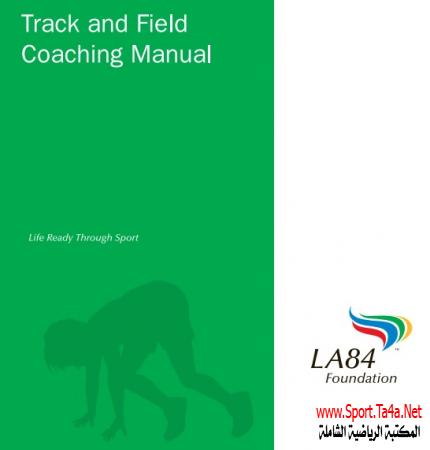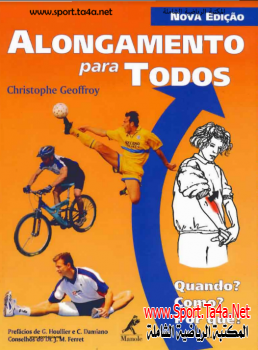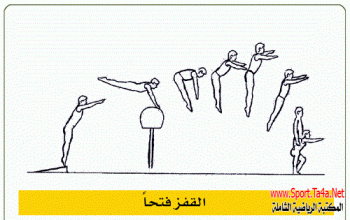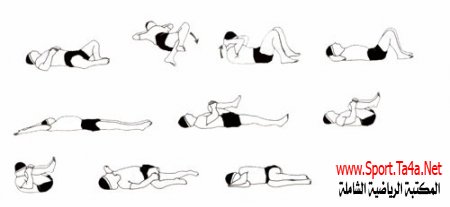Eccentric Exercie: A Comprehensive Review of a Distinctive Training Method
Aaron Bubbico, B.S. and Len Kravitz, Ph.D.
Introduction and Brief History of Eccentric Exercise
Eccentric muscle actions regularly occur as a braking or opposition force to a concentric (shortening) actions in many movements, in order to protect joint structures from damage. With an eccentric action the muscle elongates while under tension, due to an opposing force (such as a weight) being greater than the force generated by the muscle. Most of the classical muscle load studies in exercise physiology have focused on isometric (same length) and isotonic (shortening) contractions. Nonetheless, one of the first research observations with eccentric muscle actions was examined in 1882 by Fick, when he discovered that a contracting muscle under stretch could produce a greater force than a shortening muscle contraction (Lindstedt, LaStayo, and Reich, 2001). About fifty years later, A.V. Hill (who became a Nobel laureate) ascertained that the body had a lower energy demand when doing an eccentric muscle action as compared to a concentric muscle action (Lindstedt, LaStayo, and Reich). According to Lindstedt, LaStayo, and Reich, in 1953 Asmussen introduced eccentric exercise as "excentric”, with 'ex' meaning away from, and centric referring to center, thus giving the meaning of moving away from center. Lindstedt and colleagues further explain that when the weight exceeds the force developed by the muscle, as in an eccentric muscle action, it is referred to as 'negative work”, because the muscle is absorbing energy in this loaded motion. Research in the field of eccentric exercise is continuing to expand in many areas of sports and rehabilitation. This review will examine the physiological mechanisms of eccentric exercise, the effects of eccentric exercise on DOMS, the repeated bout effect, unilateral eccentric exercise and its effects on the unmovable limb, differences in the response of old and young persons to eccentric training, submaximal versus maximal eccentric exercise and the effects on muscle damage, eccentric exercise and 1-RM strength,eccentric exercise and rehabilitation, and the energy costs of eccentric exercise.
What are the Physiological Mechanisms of a Concentric and Eccentric Action?
Muscle is a tension-producing tissue that is comprised of small contractile units referred to as sarcomeres (See Figure 1). The sarcomere contains thick (myosin) and thin (actin) myofilaments (muscle filaments or proteins), which overlap to allow for the formation of a cross-bridge bond (attachment). The cross-bridge (or sliding filament) theory of muscle contraction states that the shortening of a muscle occurs as the myosin cross-bridges cyclically attach to actin and draw the actin across the myosin, thereby creating force and shortening (Herzog et al., 2008). Herzog and colleagues add that each of the cross-bridge attachment/detachment cycles is powered by the splitting of one molecule of adenosinetriphosphate (ATP). This shortening, contraction cycle is referred to as a concentric action (or contraction). Concentric muscle actions are seen anytime a muscle performs work such as walking on level ground, kicking a ball, or picking up a weight.
An eccentric muscle contraction, on the other hand, is the stretching of a muscle in response to an opposing force on that muscle, in which the opposing force (weight being lifted) is greater than its current force production. When the myofilaments of a muscle fiber are stretched while contracting (i.e, doing an eccentric contraction), Herzog and colleagues (2008) propose there may be a decreased rate of cross-bridge detachments (thus an increased PERCENTAGE of cross-bridges remain attached) leading to greater force production on the eccentric bout. In addition, Herzog et al. add that there is an increase in the stiffness of the titin protein (see Figure 1) during the eccentric contraction. Titin adds a passive (i.e., a tautness) force enhancement to the muscle's force production while being lengthened (under load). Herzog and colleagues speculate that other, not fully elucidated, metabolic force enhancement changes in the sarcomere are also occurring during eccentric muscle actions. Examples of eccentric muscle contractions are walking down a hill, or resisting the force of gravity while lowering a weight or object. Eccentric actions place a stretch upon the sarcomere to the point at which the myofilaments may experience sarcomere strain, or damage referred to as exercise-induced delayed onset muscle soreness (DOMS).
Sarcomere Structure: Mechanisms of Concentric and Eccentric Actions
a) With a concentric action, the myosin cross-bridges attach and draw the actin proteins towards each other, shortening the sarcomere
b) With an eccentric action, the myosin cross-bridges attach and the actin proteins move away from each other (as the weight is greater than the force of the muscle), lengthening the sarcomere
What is the Sequence of Events Leading to DOMS from Eccentric Exercise?
All types of muscle contractions, especially in untrained individuals, can cause DOMS but it is especially noticed after a bout of eccentric exercise. DOMS is typically characterized as the muscle soreness and swelling that becomes evident 8 to 10 hours after exercise and peaks between 24 and 48 hours (Balnave and Thompson, 1993). It should be noted, however, that "tenderness” rather than soreness may be a more appropriate word to use with clients when describing the effects of DOMS (Proske & Allen, 2005).
There are several theories explaining the multifactor causes of DOMS. One hypothesis is the connective tissue theory that emphasizes the disruption of the non-contractile elements (i.e., connective tissue) in the sarcomere (such as the sarcoplasmic reticulum) and the connective tissues surrounding muscle proteins (i.e., sarcolemma) (Malachy et al., 1999). Malachy and colleagues continue that a widely known cellular theory of DOMS focuses on the irreversible strain placed upon the sarcomeres during an eccentric contraction, resulting in disruption of components of the sarcomere. Still, most recently, a newer theory spotlights that an additional contribution to DOMS is with the excitation-coupling (E-C) mechanism of the myosin cross-bridges attaching to actin proteins (Proske & Allen, 2005). Lamb (2009) explains that the release of calcium ions (from the sarcoplasmic reticulum), which initiates the power stroke movement (i.e. the sliding of actin over myosin proteins), can be 'stretched' significantly with eccentric contractions (as compared to concentric actions). According to Lamb, this E-C coupling elongation disruption, followed by substantial calcium ion release, results in a disruption of the voltage regulating sensors in the sarcomeres (which regulate neural input in the muscle), which also contributes to DOMS occurring from the eccentric exercise (Lamb, 2009).
E-C Mechanism: Sarcoplasmic Reticulum Surrounding Muscle Proteins
The sarcoplasmic reticulum surrounds muscle proteins and contains calcium ions. It may be overstreched from an eccentric contraction, causing a substantial release of calcium ions, which it contains. Calcium ions, which have a double positive electrical charge, may then disrupt the voltage regulating sensors in the muscle, contributing to DOMS.
With the numerous theories about what causes DOMS, it is safe to say that there is still much to be learned through research, although all the theories clearly indicate that exercise-induced DOMS is a multifactor event in muscle. With the overextension of the sarcomeres during an eccentric contraction, there is a "popping” or release of tension from within the sarcomere (Morgan, 1990). This phenomenon is the result of little or no overlap between some of the myosin and actin filaments, and the elongation tension being placed on the connective tissues and other proteins in the sarcomere is beyond their capacity, eventually leading to muscle cell damage with repeated eccentric loading (Balnave & Allen, 1995).
What is the Repeated Bout Effect of Eccentric Training?
One area of research that has much promise, in relation to DOMS and eccentric exercise, is the repeated bout effect (RBE). One of the only ways, it seems, to prevent or lessen the soreness caused by DOMS (or hasten the recovery of DOMS) from eccentric exercise is to eccentrically stimulate the muscles about one week (or more) prior to the eccentric training bout (Pettitt et al., 2005). The reduced DOMS response to eccentric resistance, after the prior eccentric exposure, is referred to as the RBE. Several studies have shown that performing a bout of exercise leading to DOMS, and then repeating the eccentric bout of exercise several days (and/or up to six months) later results in the following: significantly lower levels of DOMS after the repeated eccentric workout, reduced circulating creatine kinase levels (a marker of muscle damage), increased range of motion recovery and enhanced strength recovery (Nosaka et al., 2001; Pettitt et al., 2005; Balnave & Thompson, 1993). Performing about of 2, 6, or 10 maximal eccentric contractions has been shown to provide a protective effect for a subsequent repeated bout of 24 to 50 maximal muscular contractions weeks later (McHugh, 2003). What causes the RBE is still yet to be decided upon conclusively, however, there are several theories suggesting it is a contribution of adaptations from neural input to the muscle, connective tissue in muscle restructuring, and cellular adaptations (increase in sarcomeres) (McHugh, 2003; McHugh et al., 1999).
What is the Unilateral Eccentric Exercise Effect on the Unmovable Limb?
Much resistance training research exists with the effects of contra lateral limb movement training on the opposite non-moveable limb. The cross-training effect has been shown to produces a transfer of improvement to an untrained limb in traditional resistance training regimes (Housh et al, 1998), but little is known about this transfer of strength from eccentric-only training. In an investigation done by Housh and colleagues, the researchers discovered that 8 weeks of unilateral eccentric-only training enhanced the strength of the trained limb (27%) and also improved the untrained or contra lateral limb (17%). The authors indicated that these adaptations were not due to hypertrophy (i.e., increases in muscle size), but from neural adaptations to the trained muscle. Implications of this research give promise and hope to individuals with an immobilized limb that has been injured or operated on and the efficacy of eccentric training to enhance muscular fitness benefits to the impaired limb.
Is there a Difference in the Response of Old and Young Persons to Eccentric Training?
Older men are not as susceptible to muscle damage caused by eccentric exercise as is seen with their younger counterparts. Lavender and Nosaka (2006) investigated the responses of 6 sets of 5 eccentric exercise reps (at 40% of their 1-RM) of the elbow flexors with older (ave. age = 70 years) and younger (ave. age = 19 years) males. The younger men experienced greater DOMS and showed greater metabolic markers of DOMS (i.e., increased levels of creatine kinase) after the eccentric training. The authors proposed that slight decreases in range of motion in the older group (due to age-related changes in muscles) might partially explain the lower levels of DOMS as compared to the younger group. In addition, with aging there is a propensity for the loss or atrophy (decrease in size) of fast-twitch muscle fibers, which are particularly challenged (leading to DOMS) in eccentric training (Lavender and Nosaka). In addition, Lavender and Nosaka hypothesize that the older adults may 'instinctively' have developed neural inhibitory mechanisms to avoid exercise-induced muscle damage. With females, Ploutz-Snyder et al. (2001) found that older women (66 yrs of age) showed no difference in DOMS then younger women (23 yrs of age) in either concentric or eccentric strength training in a 12-week study evaluating knee extension strength.
Due to muscle mass and strength decreases associated with aging and inactivity (referred to as sarcopenia), it is valuable to know that eccentric strength training is a principal training technique that can be incorporated with older male and female clients. In fact eccentric exercise has been shown to increase the size of type II (fast-twitch) muscle fibers in men (18-80 years of age) and significantly improve the strength of women (20-74 yrs of age) (Hortobagyi et al., 1995).
What is Best to Implement with Entry Level Clients: Submaximal or Maximal Eccentric Exercise?
As discussed previously, eccentric loading leads to DOMS, especially if in an unaccustomed condition, and or at maximal or near maximal intensities. During traditional resistance training workouts, the loads of the lifts are typically submaximal (i.e., some percentage of 1-RM). To compare the DOMS effects of submaximal versus maximal eccentric training, Nosaka and Newton (2002) measured muscle damage (of the elbow flexors) in untrained males after completing eccentric submaximal bouts (3 sets of 10 repetitions at 50% of 1-RM) in one arm and then 4 weeks later doing maximal eccentric lifts (3 sets of 10 repetitions at 100% 1-RM). Findings indicated that using a 50% load in an untrained subject while performing eccentric exercise triggered significantly less muscle damage and enhanced the speed of recovery when compared to untrained subjects performing maximal eccentric exercise. This study's findings are meaningful to the personal trainers because of the knowledge that too high of intensity of leads to DOMS, and this may lead to a drop off in exercise adherence in these clients. Therefore, the researchers recommend to avoid the use of near-maximal or maximal eccentric muscular contractions that when designing exercise programs for novice clients.
Eccentric Exercise and 1-RM Strength
Strength and power athletes focus on 1-RM extensively, as a way gauge and measure strength increases and decreases. A higher 1-RM will allow an exerciser and athlete to have a higher relative submaximal training volume, and thus the potential to improve submaximal muscle performance. In a study conducted by Doan et al. (2002), researchers found that 1-RM could be acutely increased by applying a supramaximal load (i.e., 105% of their 1-RM) on the eccentric phase of the lift. This acute increase (5% greater than their 1-RM) in eccentric loading improved 1-RM concentric performance by 5 to 15 lbs for all subjects. Theories as to why strength increases occur following eccentric loading include enhanced neural stimulation to and within muscle, higher stored elastic energy in muscle, and increases in muscle hypertrophy. Neural stimulation within muscle from eccentric exercise causes a greater muscle spindle stretch. The muscle spindle is a stretch receptor in muscle that lies parallel to the contractile proteins (actin and myosin). It is responsive to stretch and speed of stretch. This increased stretch of the muscle spindles activates an increase of firing motor (nerves that travel to muscles) nerves to the muscle, potentially increasing the concentric force of contraction in the muscle fibers (Deitz, Schmidtbleicher and Noth, 1979). Doan and colleagues suggest that supramaximal eccentric training is an excellent tool to have athletes and clients complete to break through training plateaus. As the client realizes he/she is able to lift heavier weights with the eccentric training, Doan et al. propose, "You are tricking your brain into neurologically preparing for a heavier concentric contraction”. Another theory of increased concentric 1-RM performance after supramaximal eccentric training involves the concept of the muscle responding like that of a rubber band. Doan and fellow researchers explain that the greater dynamic eccentric force may increase the storage of elastic energy in the muscle fibers and tendons, thus providing greater produce force production capabilities in a concentric action. Interestingly, Hortobagyi et al. (1996) noted that in a 12-week study of isokinetic concentric versus isokinetic eccentric training that subjects experienced more fatigue with the concentric training regimen. The authors conclude that these findings advocate the importance of integrating eccentric training in recreational settings.
Anterior cruciate ligament reconstruction (ACL-R) rehabilitation continues to be a challenging area of research. Safe and effective methods for rehabilitation of ACL-R are constantly being researched. Careful, progressive overloading of the muscle early after surgery is essential to an effective recovery. Gerber and colleagues (2009) found that patients performing a 12-week eccentric training program (along with functional rehabilitation exercises), beginning 3 weeks after surgery, had greater improvements in quadriceps femoris and gluteus maximus muscle volume and overall function than a standard rehabilitation protocol of weight-bearing exercise, resistance exercise and functional training. One-year follow-up showed the eccentric exercise group to have a 50% greater improvement in quadriceps femoris and gluteus maximus muscle volume. Additionally, improvement of overall function was significantly greater in the eccentric group than the standard rehabilitation control group. Results of this study show the importance of using eccentric exercise at early stages of an ACL-R rehabilitation program.
Another common injury (especially in athletes) treated in rehabilitation settings, is patellar tendinopathy (jumper's knee). Jumper's knee occurs frequently in high-level volleyball, basketball and soccer players (Lian et al., 2005).
Using a 12-week eccentric rehabilitation intervention, Bahr et al. (2006) found no measurable differences between a surgical intervention and eccentric exercise rehabilitation for jumper's knee in a combined athlete and non-athlete group of predominantly men. Both treatments (surgical and eccentric strength training) resulted in definite improvements in knee function. The researchers concluded that eccentric training is a low risk and low cost option that should be considered before an individual with jumper's knee has a surgical intervention. With the prevalence of fitness enthusiasts pushing themselves to compete in recreational sports it is helpful for the personal trainer to realize that eccentric training is a viable intervention to use for client's needing post-rehabilitation conditioning.
Eccentric Exercise and Boosting the Metabolism
Research has found that doing exercise with an eccentric emphasis can acutely and meaningfully raise the resting energy expenditure of both untrained and trained individuals after a total body workout (Hackney et al., 2008). Hackney and colleagues found that performing one full-body workout with an eccentric emphasis (1 second concentric and 3 second eccentric on all exercises) elevated resting energy expenditure approimately 9% after the workout. The resting energy expenditure from resistance exercise is likely caused by recovery and repair factors associated with DOMS, the overall muscle repair process and the energy costs associated with protein synthesis. (Hackney et al, 2008).
Final Eccentric Thoughts
Eccentric muscle exercise provides many unique features of conditioning that have been described and summarized in this article. The challenge to the exercise professional is to recognize the potental of this power-generating training method and structure effective workouts that will benefit clients. Go for the NEGATIVE!
Table 1. Fifteen Key Findings About Eccentric Training
1) Eccentric exercise creates greater force during the eccentric bout, due to the fact there is a decreased rate of actin-myosin cross-bridge detachments (Herzog et al., 2008). Therefore, a person is capable of working with greater weight during an eccentric exercise.
2) Even though eccentric contractions create more force than concentric actions, they use less energy. This is because during a concentric muscle action one molecule of ATP is used to detach each actin-myosin cross-bridge. However, during an eccentric action some cross-bridges are forcibly detached due to the stretching of the muscle fiber, thus using less ATP (McHugh et al., 1999).
3) Some clients feel more muscle "tenderness” from DOMS as opposed to muscle soreness (Proske & Allen, 2005).
4) The only scientific method of utilizing eccentric exercise with clients to markedly reduce DOMS is the repeated bout effect. Complete an eccentric bout of exercises and then repeat the workout one week (or more) later and there will be much less DOMS after the second workout (Pettitt et al., 2005).
5) For injured clients, eccentric exercise of the 'healthy' limb is a viable option for cross training of the immobilized limb (that has been injured or recently had surgery) (Housh, 1998).
6) Older clients are not be as susceptible to muscle injury with eccentric exercise as is seen with their younger counterparts due to several inhibiting and physiological mechanisms (Lavender and Nosaka, 2006). Thus, eccentric training is an efficacious strategy to utilize with older clients.
7) Avoid doing near-maximal or maximal eccentric muscular contractions with "entry-level” clients (Nosaka and Newton, 2002). Submaximal loads have been shown to have much less DOMS, and thus, this may also improve the exercise compliance of the clients.
8) Resistance exercise programs should include periods of eccentric exercise, as this will provide protection from injury or reinjury (if a client was previously injured) (Proske and Allen, 2005).
9) For optimal development of muscle strength and size, programs should include concentric and eccentric training (Proske and Allen, 2005).
10) An enhanced submaximal training volume is possible if supramaximal eccentric loading (i.e., > 100% of 1-RM) is integrated into the resistance training program (Doan et al., 2002).
11) Supramaximal eccentric training (i.e., > 100% of 1-RM) is an excellent tool to have athletes and clients complete to break through training plateaus (Doan et al., 2002).
12) Eccentric training has been shown to be a successful intervention for post-rehabilitation injury recovery for lower body injuries (Bahr et al., 2006).
13) In some research, subjects report less fatigue from eccentric training as compared to concentric training. These findings support the importance of integrating eccentric training in personal training settings (Hortobagyi et al. 1996).
14) Total body eccentric emphasis training (i.e., 1-second concentric and 3-second eccentric contractions) can elevate resting metabolic rate about 9% for a short period of time post-workout (up to 2 hours) (Hackney et al., 2008).
15) The energy cost of eccentric training is very low while the magnitude of the force produced is unusually high. Therefore, muscles respond to eccentric training with meaningful changes in strength, size and power (Lindstedt, LaStayo, and Reich, 2001).
Special Focus:
Is There a Best Way to Do Eccentric Training Exercises?
From this research review, a couple of eccentric training techniques have surfaced, but this is not to say there are many other techniques of eccentric training a personal trainer may employ. With all eccentric training workouts make sure the client completes an appropriate full body warm-up (such as light-to-moderate aerobics for 5 to 10 minutes) followed by an appropriate muscle-joint preparation for the ensuing workout. Prior to completing any eccentric exercise do one traditional warm-up set (i.e, concentric followed by eccentric phases) of the exercise at about 50% of what the client normally lifts.
Here are two eccentric training variations observed from this research review that can be employed with almost all resistance training exercises.
Eccentric Emphasis Training
a) Start with the weight the client normally uses for the particular muscular fitness goal
b) For instance, if the client normally does a 8-RM, meaning she/he does 8 repetitions using a weight where he/she reaches 'momentary muscular fatigue' at 8 repetitions
c) Have client do the concentric contraction, lifting the load in a 1 second up
d) Have the client do the eccentric contraction, lowering the load in 3-5 seconds (thus emphasizing the eccentric phase of the exercise)
e) Client completes 8 repetitions (as this example is an 8-RM); the personal trainer will probably need to aid with the concentric lifts as the client starts to fatigue
f) Progress with increased time during the lowering, eccentric emphasis phase
g) Number of sets is individualized to client goals
Supramaximal Eccentric Training
a) Start with the weight the client normally uses for the particular muscular fitness goal
b) For instance, if the client normally does a 10-RM with 100 lbs., meaning she/he does 10 repetitions with 100 lbs (but cannot do an 11th repetition)
c) With the supramaximal technique, start with 105% of what the client lifts; in this example the personal trainer would load the bar with 105 lbs
d) Help the client lift the weight in 1-2 seconds
e) Lower the load in 3-5 seconds, still emphasizing the eccentric phase of the lift
f) Progressively increase the supramaximal load (i.e., 107%, 110%, 115% up to 125%) as the client appears ready for greater eccentric training challenges
g) Number of sets is individualized to client goals
References:
Bahr, R, Bjorn, F., Sverre, L., and Engebretsen, L. (2006). Surgical treatment compared with eccentric training for patellar tendinopathy (Jumper's knee). Journal of Bone and Joint Surgery, 88 (8) 1689-1698.
Balnave, C.D., and Allen, D.G. (1995). Intracellular calcium and force in single mouse muscle fibres following repeated contractions with stretch. Journal of Physiology, 488: 25-36.
Balnave, C.D., and Thompson, M.W. (1993). Effect of training on eccentric exercise-induced muscle damage. Journal of Applied Physiology, 75 (4), 1545-1551.
Brown, S.J., Child, R.B., Day, S.H., and Donnelly, A.E. (1997). Exercise-induced skeletal muscle damage and adaptation following repeated bouts of eccentric muscle contractions. Journal of Sports Science, 15, 215-222.
Dietz, V., Schmidtbleicher, D. and Noth. J. (1979). Neuronal mechanisms of human locomotion. Journal of Neurophysiology. 42(5), 1212-1222.
Doan, B.K., Newton, R.U., Marsit, J.L., Triplett-McBride, N., Koziris, L.P., Fry, A.C., and Kraemer, W.J. (2002). Effects of increased eccentric loading on bench press 1RM. Journal of Strength & Conditioning Research, 16(1), 9-13.
Enoka, R.M. (1996). Eccentric contractions require unique activation strategies by the nervous system. Journal of Applied Physiology, 81: 2339-2346.
Gerber, J.P., Marcus, R.L., Dibble, L.E., Greis, P.E., Burks, R.T., LaStayo, P.C. (2009). Effects of early progressive eccentric exercise on muscle size and function after anterior cruciate ligament reconstruction: A 1-year follow-up study of a randomized clinical trial. Journal of Physical Therapy. 89(1): 52-59.
Hackney, K.J., Engels, H.J., and Gretebeck, R.J. (2008). Resting energy expenditure and delayed-onset muscle soreness after full-body resistance training with an eccentric concentration. Journal of Strength and Conditioning Research. 22(5):1602-1609.
Herzog, W., Leonard, T.R., Joumaa, V. and Mehta, A. (2008). Mysteries of muscle contraction. Journal of Applied Biomechanics, 24, 1-13.
Housh, D.J., Housh, T.J., Weir, J.P., Weir, L.L., Evetovich, T.K., & Donlin, P.E. (1998). Effects of unilateral eccentric-only dynamic constant external resistance training on quadriceps femoris cross-sectional area. Journal of Strength & Conditioning Research, 12(3), 192-198.
Hortobagyi, T., Zheng, D., Weidner, M., Lambert, N., Westbrook, S., and Houmard, J. (1995). The influence of aging on muscle strength and muscle fibre characteristics with special reference to eccentric strength. Journal of Gerontology, 50, B399-B406.
Hortobagyi, T., Hill, J.P., Houmard, J.A., Fraser, D.D., Lambert, N.J., Israel, R.G. (1996). Adaptive responses to muscle lengthening, and shortening in humans. Journal of Applied Physiology, 80(3), 765-772.
Lamb, D.G. (2009). Mechanisms of excitation-contraction uncoupling relevant to activity-induced muscle fatigue. Applied Physiology, Nutrition, and Metabolism, 34: 368-372.
Lavender, A.P, & Nosaka, K. (2006). Comparison between old and young men for changes in makers of muscle damage following voluntary eccentric exercise of the elbow flexors. Applied Physiology, Nutrition, and Metabolism. 31, 218-225.
Lian, O.B., Engebretsen, L, Bahr, R. (2005). Prevalence of jumper's knee among elite athletes from different sports: a cross-sectional study. American Journal of Sports Med. 33:561-567.
Lindstedt S.L., LaStayo P.C., and Reich T.E. (2001). When active muscles lengthen: Properties and consequences of eccentric contractions. News Physiological Science. 16, 256-261.
McHugh, M.P. (2003). Recent advances in the understanding of the repeated bout effect: the protective effect against muscle damage from a single bout of eccentric exercise. Scandinavian Journal of Medicine & Science in Sports 2003: 13: 88-97
McHugh, M.P., Connolly, D.A.J., Easton, R.G., and Gleim, G.W. (1999). Exercise-induced muscle damage and potential mechanisms for the repeated out effect. Sports Medicine, 27(3): 151-170.
Nosaka, K., Sakamoto, K., Newton, M. and Sacco, P. (2001) How long does the protective effect on eccentric exercise-induced muscle damage last? Medicine & Science in Sport & Exercise, 33,1490-1495.
Nosaka, K., and Newton, M. (2002). Difference in the magnitude of muscle damage between maximal and submaximal eccentric loading. Journal of Strength and Conditioning Research, 16(2), 202-208.
Pettitt, R. W., Symons, D. J., Eisenman, P.A., Taylor, J. E., White, Andrea, T. (2005). Repetitive eccentric strain at long muscle length evokes the repeated bout effect. Journal of Strength and Conditioning Research, 19(4), 918-924.
Ploutz-Snyder, L.L, Giamis, E.L., Formikell, M., and Rosenbaum, A.E. (2001). Resistance training reduces susceptibility to eccentric-induced muscle dysfunction in older women. Journal of Gerontology, 56A, B384-B390.
Proske, U. and Allen, T.J. (2005). Damage to skeletal muscle from eccentric exercise. Exercise and Sports Science Reviews, 33(2), 98-104.
Yeung, E.W. and Allen, D.G. (2004). Stretch activated channels in stretch-induced muscle damage: role in muscular dystrophy. Clinical and Experimental Pharmacology and Physiology. 31:551-556.
Bios:
Aaron Bubbico has a bachelors' degree in Exercise Science and is working on his Masters degree in Exercise Science at the University of New Mexico (Albuquerque). He is owner and operator of Quality Fitness Training in Albuquerque, NM. His research interests include eccentric load training, hypertrophic adaptations and mechanisms, and periodization. Aaron enjoys competing as an IFPA professional bodybuilder.
@Bio:Len Kravitz, PhD, is the program coordinator of exercise science and a researcher at the University of New Mexico, Albuquerque, where he won the Outstanding Teacher of the Year award. Len was recently honored with the 2009 Canadian Fitness Professional Specialty Presenter of the Year award and chosen as the American Council on Exercise 2006 Fitness Educator of the Year. He has also received the prestigious Can-Fit-Pro Lifetime Achievement Award and the Aquatic Exercise Association Global Award.
 التعليقات: 0
التعليقات: 0
















